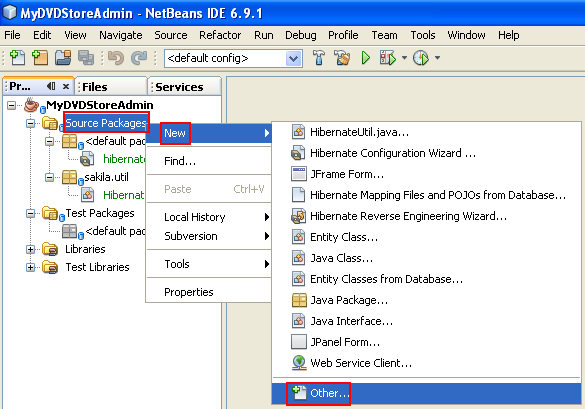Roads & PavementRoads & Pavement
Barefoot
Minimal
Low
Medium
High
Maximal
All around running shoes offer comfort and cushioning for daily runs, jogs, walks, and long mileage. They offer enough versatility for both faster and slower runs and are a great option for those who want one running shoe to do it all.
Fast run or uptempo running shoes are lightweight and responsive. They offer streamlined designs that have minimal uppers and offer a high level of energy return. These shoes are a great option for faster runs in the week or those looking for a livelier experience.
Max Cushion shoes offer premium cushioning with ample ground protection and a stable ride. These types of shoes provide abundant impact protection that softens landings while running at any pace or distance. These types of shoes are best for slower recovery runs and easy days where comfort takes priority.
Racing shoes are designed with optimal performance in mind. These types of shoes have snug-fitting uppers, energetic midsole foams, and features implemented for maximum efficiency. These types of shoes are best for runners looking to gain the ultimate advantage in races but may sacrifice some durability and comfort.
Gym Workout shoes offer a stable and versatile ride. They have a firmer underfoot feeling that provides stability for lateral movements with comfortable uppers. These types of shoes are best for trips to the gyms, cross training, casual wear, and light running. Guide to JPA with Hibernate Relationship Mapping
Road running shoes feature smooth outsoles that are designed for running on paved surfaces such as roads, sidewalks, and bike paths.
Designed to handle most trail runs, these shoes prioritize comfort and a smooth ride. These shoes are great for anything from smooth singletrack, park trails, and fireroads making them ideal for those who run from their doorstep on streets before hitting the trail.
These shoes are best used for hard, rugged trails such as shale, granite or sandstone where grip on smooth surfaces and underfoot protection are important.
Designed for use in muddy, soggy conditions, these shoes feature very aggressive outsoles that dig deep into soft ground for exceptional traction.
These shoes feature technical outsoles designed to grip snowy and icy trails making them ideal for winter trail running.
Cushioning level, or stack height, refers to how much shoe is between your foot and the ground. For this category, we reference the amount of cushioning below the forefoot as the heel height will be equal to or greater than the forefoot height.
Hibernate One To Many Mapping Example Annotation DigitalOcean
0-13mm. The Shoe generally does not have a midsole and feels like there is no cushioning. This shoe is all about feeling the ground underfoot.
14-18mm. The shoe has a thin midsole that allows for a natural running experience. Racing shoes and minimalist shoes are common here. These shoes offer a feeling of being connected to the road or trail.
19-23mm. The shoe has a slightly cushioned feel and may feature added cushioning technologies. Performance training shoes and some trail shoes are common here. These offer protection during footstrike but prioritize a lightweight, grounded experience.
24-28mm. These shoes have a stack height that fall near the middle of the spectrum.The shoes in this category are verstaile and great for all types of runs and distances.
29-34mm. The shoe has a thick midsole and ample cushioning. These shoes are highly protective and absorb more impact than the body.
35mm plus. The shoe has an extremely thick midsole and extra cushioning. The focus is on protection and soft foam underfoot with hardly any ground feel.
Neutral shoes support the foot through a normal range of arch collapse and generally do not have a built-in technology to correct movement.
Stability shoes are a great option for those who overpronate or need added support. These shoes help to limit the inward rolling motion of the ankle while running or walking and assist in guiding the foot straight through the gait cycle. java Mapping Exception with Hibernate 4.0 UserType 3.0.0.CR4
Product Details:
Hibernate Tutorial Generate O R Mappings shop, 000 Hibernate Way Freeport FL 32439 Property for sale shop, Hibernate Many To Many Mapping Join Tables DigitalOcean shop, An Introduction to Hibernate 6 SpringerLink shop, Java Hibernate Reverse Engineering Tutorial with Eclipse and MySQL shop, UML2SQL component view Download Scientific Diagram shop, SOLUTION Hibernate Studypool shop, Hibernate Search 7.0.0.Final Reference Documentation shop, JPA Hibernate One to Many Mapping Example with Spring Boot shop, Tooling for your Hibernate projects. Hibernate Tools shop, javaskool Hibernate Framework ORM Tool Hibernate API shop, Webinar Hibernate the ultimate ORM framework PPT shop, Generate or synchronize JPA Hibernate entities from existing DB shop, Generate Hibernate Mapping for Oracle Database shop, Hibernate Tips How to map a view with Hibernate shop, Accessing Data Through Hibernate What DBAs Should Tell Developers shop, Spring Hibernate Configuration and Create a Table in Database shop, Hibernate Second Level Cache Explained Hazelcast shop, Tutorial on generating Hibernate mapping files and Java classes shop, java Mapping Exception with Hibernate 4.0 UserType 3.0.0.CR4 shop, Hibernate One To Many Mapping Example Annotation DigitalOcean shop, Guide to JPA with Hibernate Relationship Mapping shop, Partial View of Hibernate Mapping File Download Scientific Diagram shop, Struts Hibernate Integration Tutorial shop, A High Level View of the Hibernate Architecture in Hibernate shop, Hibernate One to Many Mapping GeeksforGeeks shop, Chapter 2. Architecture shop, Hibernate Community View topic Playframework 2.6.x integrating shop, Spring MVC with Hibernate Complex to Simple shop, Chapter 2. Architecture shop, Persistence tool window IntelliJ IDEA Documentation shop, Chapter 1. Introduction to Hibernate shop, JPA Hibernate One to Many Mapping Example with Spring Boot shop, Seminar on. Overview Hibernate. What is it Hibernate. How does it shop, Hibernate Architecture shop, Hibernate Tutorial Managing Persistent Entities with Entities Editor shop, Effective Relationship Mapping with Hibernate JPA OneToMany shop, Hibernate Architecture Tutorials Point shop, Hibernate Tutorial Managing Persistent Entities with Entities Editor shop, Hibernate Tip How to map a read only database view shop, Hibernate Tutorial Generate O R Mappings shop, java How to map the hibernate to the JSP view Stack Overflow shop, Hibernate Architecture shop, Chapter 2. Architecture shop, How to map a JPA entity to a View or SQL query using Hibernate shop, Chapter 1. Introduction to Hibernate shop, Hibernate architecture Javainsimpleway shop, Hibernate Tips How to map a view with Hibernate shop, Hibernate Architecture shop, Hibernate One To Many Mapping Example Annotation DigitalOcean shop, Product Info:
Hibernate mapping view shop.
- Increased inherent stability
- Smooth transitions
- All day comfort
Model Number: SKU#7441027





